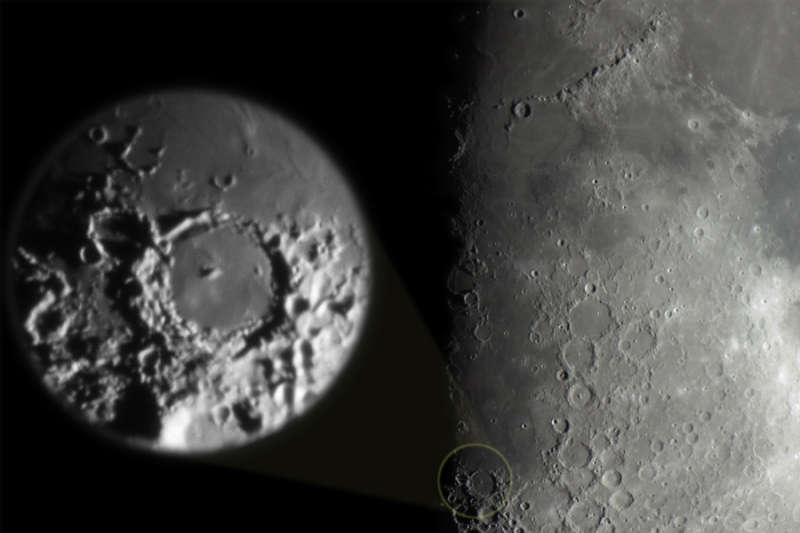Credit & Copyright: Stefan Seip
(TWAN)
Explanation:
Stark shadows of
mountains and
crater walls stand out along
the lunar terminator, or shadow line between night and day,
in this
telescopic image.
Of course, if viewed from the
lunar surface near the terminator line,
the Sun would be rising and still close to the lunar horizon.
But the picture's inset at the left highlights a more elusive
lunar sunrise phenomenon.
Streaming through a gap in the eastern wall of 45 kilometer wide
Hesiodus crater,
the low-angle sunlight produces
a long sunrise ray
playing along the otherwise shadowed crater floor.
Sunrise rays are short-lived and can be rewarding to spot for
Moon
enthusiasts with telescopes.
Seen in Hesiodus and other craters, the ray timing can be
calculated based on the
observer's
location.
This picture of a first quarter Moon was
recorded at 23:45 UT on February 22nd from Stuttgart, Germany.
In the inset, the larger crater Pitatus is at the right.
For location, Hesiodus and Pitatus are circled at the bottom of the picture.
1999 2000 2001 2002 2003 2004 2005 2006 2007 2008 2009 2010 2011 2012 2013 2014 2015 2016 2017 2018 2019 2020 2021 2022 2023 2024 2025 |
Yanvar' Fevral' Mart Aprel' Mai Iyun' Iyul' Avgust Sentyabr' Oktyabr' Noyabr' Dekabr' |
NASA Web Site Statements, Warnings, and Disclaimers
NASA Official: Jay Norris. Specific rights apply.
A service of: LHEA at NASA / GSFC
& Michigan Tech. U.
|
Publikacii s klyuchevymi slovami:
crater - sunrise - terminator - shadow - krater - Luna - lunnaya poverhnost' - Terminator
Publikacii so slovami: crater - sunrise - terminator - shadow - krater - Luna - lunnaya poverhnost' - Terminator | |
Sm. takzhe:
Vse publikacii na tu zhe temu >> | |
